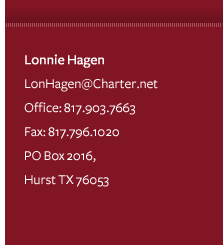Life span,
cost to install |
Fire rating
(A = most resistant) |
Appearance |
Weight |
Advantages &
Disadvantages |
Built-up roof
10–20 years
$5,000 – $15,000 |
Varies. With 3 to 5 layers of fiberglass felt and gravel covering or mineral surface capsheet, should secure A rating |
The standard
asphalt-and-g
ravel covering
for flat and
low-slope roofs.
Surface can be
rock, slag, or
colored
capsheet |
3lbs. |
Inexpensive. But if poorly installed, may be messy-looking and may leak |
Torch down
10–20 years
$5,000–$12,0 00 |
Two layers, with a modified fire-resistant base sheet, should secure an A rating |
Variation of built-up roof: an asphalt-and-g ravel roof laid down in one roll. Smooth or granular surface; white, grays, browns |
2lbs |
Usually made in factories under controlled conditions, unlike standard built-up roofs. Reflective coatings are available that protect them from ultraviolet deterioration |
Single Ply Lifetime Flat Roof
$7,000-$15,000 |
Class A |
Energy Star Effecient, Lightweight, Lifetime Guarantee |
2lbs. |
Manufacturer Approved Installation only. |
Foam
7–10 years
$7,000–$15,0 00 |
Class A |
Sprayed at least 2 inches thick. Must have protective coating. Appearance varies from slightly pocked (like orange peel) to bumpy (like popcorn) |
3lbs. |
High insulation value. The coatings are highly reflective, which protects against UV deterioration. Must be recoated every 5 to 10 years if covered with acrylic. Fairly easy to damage. The most attractive and durable roofs use high-density foam and a more expensive coating |
Standing- seam metal panel
20–40 years $10,000–$25, 000 |
Class A |
Painted metal panels with raised seams 18 to 24 inches apart. High-tech or industrial look |
2lbs. |
Installation is simpler than with metal tiles, but also difficult to seal around perforations |
Metal tile
20–40 years
$8,500–$15,000 |
Class A if old roof removed; B if installed with heavy roofing paper between old roof and new; C if applied directly over roof |
Designed to have a shake or tile like look. Wide color range |
4lbs. |
Lightweight, durable. Difficult to seal around perforations. May require gypsum-board base |
Wood shake pressure- treated
10–20 years
$7,500–$15,0 00 |
Class A only if you install a 72-pound mineral surface capsheet underneath |
Classic wood roof that many synthetics try to mimic |
4lbs. |
Must be kept clean: Moss, mildew, and debris speed deterioration. In dry climates, untreated shakes (even those treated with spray-on coating) are essentially kindling |
Fibrous cement shake
20–40 years
$9,000–$20,000 |
Class A (B if not installed over plywood; also may not meet seismic codes) |
These synthetics can often look like shake or slate |
5.5lbs. |
Lightweight and durable; generally requires no roof reinforcement. In wet climates, rain can cause the fibers to expand and contract, causing premature failure |
Fiberglass composition shingle 20–50 years
$4,000–$30,000 |
Class A |
Most common for moderate-slope to steep roofs. Crushed, uniform mineral surface |
3lbs. |
Easy to apply and economical. Some homeowners' associations won't allow these roofs. Some now available thicker and more textured, considered more attractive |
Concrete tile
50 years
$15,000–$25, 000 |
Class A |
Synthetic shakes, slate, Spanish tile look-alikes, in many colors, textures |
5.5lbs. |
Same weight and framing challenges as clay tile; a bit less prone to breakage. New lightweight concrete becoming available |
Clay tile
50–100 years
$15,000–$25, 000 |
Class A |
Classic red Spanish roof. Other colors available |
5.5lbs. |
Long-lasting and attractive; meets same breakage strength requirements as concrete tile. Very heavy, but lightweight clay tile is also available |







